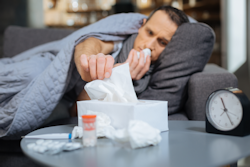What Should Employers Do?
Infectious Disease Preparedness & Response (IDPR) Plan
An IDPR Plan prepares employers to reduce transmission of respiratory viruses (COVID-19, flu, RSV), protect higher-risk workers, and maintain essential operations. Core elements of the plan are:
- Stay-home & return-to-work criteria: Employees with respiratory illnesses should stay home until their symptoms improve and they have been fever-free for at least 24 hours without the use of fever-reducing medication. Upon returning, they should take added precautions—such as improving ventilation and wearing a mask for five days, as needed—where feasible.
- Layered prevention (hierarchy of controls): Optimize ventilation/filtration (HVAC and portable HEPA where appropriate), offer high-quality masks/respirators during high-risk periods, encourage vaccination, facilitate testing when symptomatic, and continue routine cleaning — escalate measures during outbreaks. Evidence shows portable HEPA units and masking reduce airborne exposure.
- Sick leave & accommodations: Provide non-punitive sick leave and flexible scheduling; avoid requiring provider notes for routine return-to-work after acute respiratory infections.
- Outbreak triggers & short-term actions: Define triggers (e.g., multiple cases in a work team within 7 days, lab-confirmed case in workplace, or local surge) and short-term responses such as temporary masking, targeted testing, increased ventilation/filtration, work from home, and enhanced cleaning.
- Communication & training: Provide simple reminders about symptom recognition, stay-home rules, how to get vaccines/tests, and correct mask use; train supervisors on privacy and flexible leave.
- Supply readiness & recordkeeping: Maintain a small stock of masks, rapid tests, hand hygiene supplies, and spare HEPA/filters. Keep incident/outbreak response logs and review the plan at least annually or when public health guidance changes.
Knowledge Check Choose the best answer for the question.
3-5. Which of the following best describes the recommended stay-home and return-to-work criteria in the IDPR Plan?
You forgot to answer the question!

